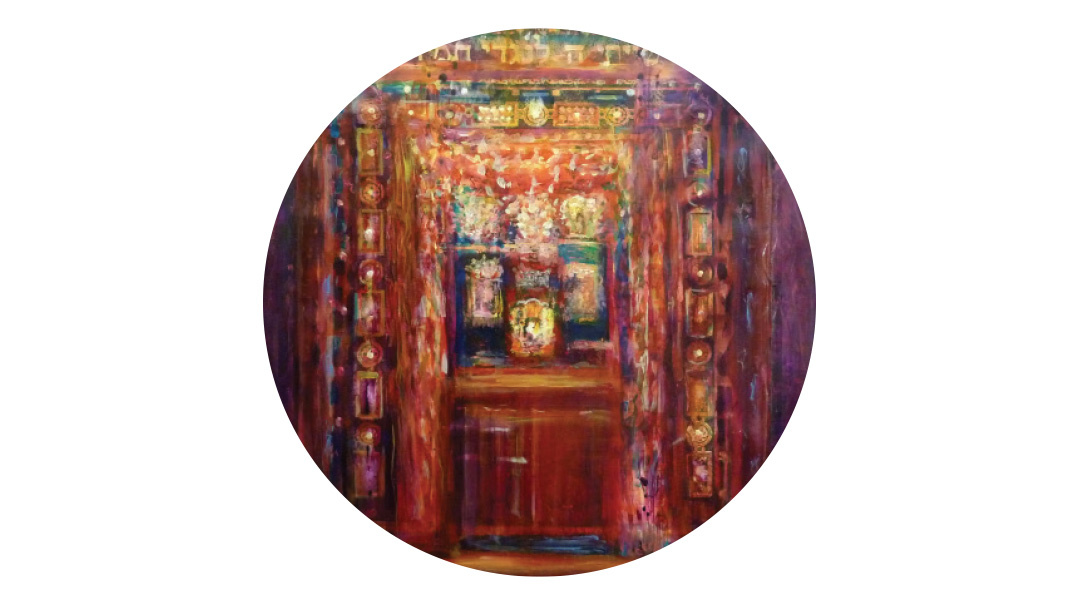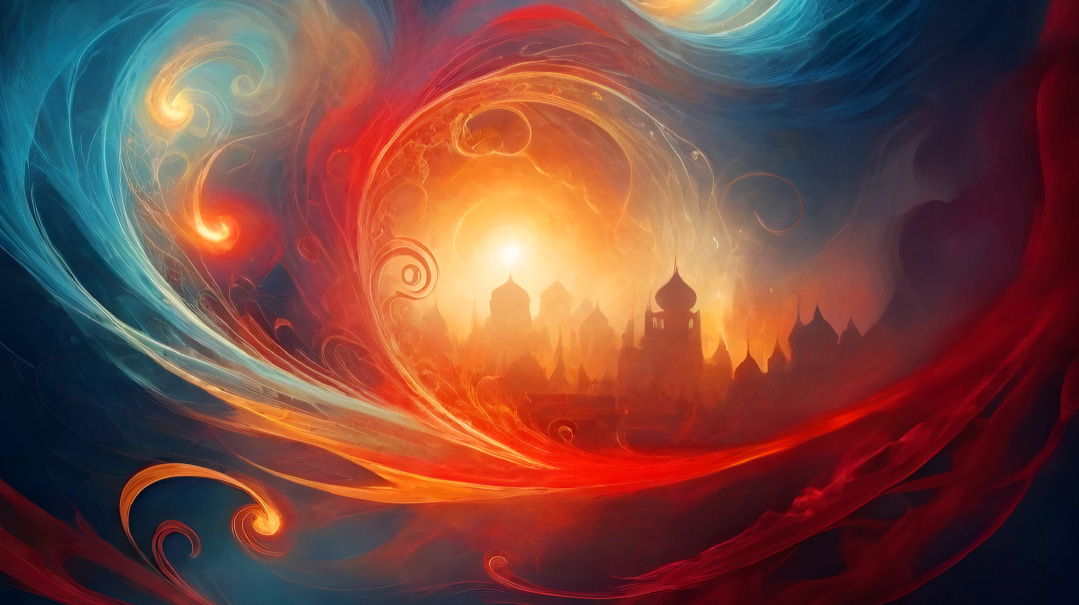Fires of Love


L ag B’omer that mystical night of towering flames has some unlikely connections to other special days in our calendar.
The Shulchan Aruch notes that Lag B’omer falls on the same day of the week that Purim was celebrated [p’lag]. Clearly there’s a special link between the two days which at first sight seem to have nothing in common. Lag B’omer is also connected to Shavuos — the Kedushas Levi notes that on Lag B’omer the energy of Shavuos can be discerned.
What do these three days have in common? What indeed is the celebration of Lag B’omer — the raging bonfires the dancing? What do these symbolize and what should be our mindset on this special day?
Lights of Torah
The Tur notes that Lag B’omer is the day on which the students of Rabi Akiva ceased to perish. Clearly this is not a reason to celebrate — after all 24000 talmidim had died! The death of Rabi Akiva’s students was not just a physical devastation. With their passing their Torah was also lost and the entire oral transmission was at risk. Kaf Hachayim explains that Lag B’omer marks the day Rabi Akiva ordained his five new students (one of whom was Rabi Shimon Bar Yochai) from whom all the oral tradition is derived. The day marks the resurgence of Torah in that generation ensuring that Torah would never be lost for all eternity.
Hilula Rabbah notes that on Lag B’omer it is appropriate to daven at the kever of Rabi Akiva as well as at the kevarim of Rabi Meir Rashbi and Rabi Yehudah Bar Ilayi all of whom were ordained on this day. In this vein Sheveli Pinchas remarks that the fires remind us of the rekindling of the lights of Torah that were almost completely desolate at that time.
The question then is why do we focus on Rabi Shimon Bar Yochai more than Rabi Akiva’s other students? Lag B’omer is the anniversary of when Rashbi left the cave notes the Aruch HaShulchan. The cave was the place that Rashbi was able to learn much of the mystical aspects of the Torah. On the day of Rashbi’s death he revealed many of these secrets to his students.
Chidah explains that Lag B’omer is the day of the celebration of the Toras Hasod. On his final day a great fire surrounded Rashbi’s home — our own fires are reminiscent of this fire of the transmission of the deep secrets of Torah.
On this level the link between Lag B’omer Purim and Shavuos is clear. Shavuos is the time when we accepted the written Torah with love. On Purim the Jews reaccepted the Oral Tradition from love. This tradition which was in danger of being forgotten was “rescued” with the ordination of the five students of Rabi Akiva on Lag B’omer.
Further Lag B’omer marks a deeper aspect of the Oral Tradition with the revelation of the secret realm of Torah that Rashbi revealed on this day. The fires should inspire within us a deeper love and appreciation for the beauty and depth of Torah.
Hidden Flames
Rav Moshe Wolfson shlita explains that one of the greatest secrets Rashbi taught was the hidden potential latent deep within each and every one of us. Every Jew is compared to a letter in the Torah. Just as each letter is redolent with infinite layers of understanding so does each Jew have hidden wells of depth unknown even to himself. No wonder Lag B’omer is known as a day of teshuvah a chance to reconnect to the crown that adorns our letter in the Torah.
Lag B’omer mystically corresponds to the Sefirah of hod she’bhod. Hod is a description of the Beis Hamikdash. Hod she’bhod refers to the Kodesh Hakodoshim that hidden section of ultimate holiness. Rav Tzvi Meir Zilberberg shlita underscores that Lag B’omer is a time of intense davening; on this day we’re able to enter into the deepest part of ourselves and access our connection with Hashem — and the purpose in our lives. Staring into the flames we feel surrounded by the fire of intense love Hashem has for each one of us. Rising to meet those flames is our own love for our Creator.
Hearts of Love
When Rabi Akiva ordained these five great rabbanim he warned them to treat each other with respect so they not die like their predecessors. Aside from the simchah of the continuation of Torah Lag B’omer marks the day when a lesson of love and respect was inculcated for generations. In fact the entire Sefiras Ha’omer is predicated on this principle.
Bnei Yisaschar notes that the Omer can be divided into two parts: the first 32 days and the last 17 days. This division is based on the statement of Rabi Elazar ben Arach that the best path a person should take is a “lev tov.” The first 32 days (the numerical value of the word lev heart) we focus on working on our relationships with others. The last 17 days (tov is numerically equal to 17) we work on being able to strengthen the place of Torah the ultimate goodness in our lives.
The Alter of Kelm taught that on each day of the Sefirah one should learn about one of the 48 ways through which Torah is acquired. The 49th day of the Sefirah is a time to review all of these ways. The Gra notes that it is very difficult for one to master all 48 kinyanim of Torah. There is a solution however. We can join with others who will complement our strengths and compensate for our areas of weakness.
Yalkut Lekach Tov notes that according to some listings the 32nd quality is “loving others.” When a person has this quality he is open to learning from others and being inspired by their strengths. Lag B’omer the 33rd day is the turning point — having made strides in the areas of loving others we can work on being conduits to reaccepting the Torah.
Circle Dance
One of the main messages Rashbi imparted to his students was the importance of mutual respect and love as a prerequisite to learning Torah. This is the very message that both Purim and Shavuos convey. The mitzvos of Purim in particular the mishloach manos we send are designed to promote unity and love. At Har Sinai the unity of the people who encamped “as one” at the foot of the mountain is highlighted for it was this that made them worthy of receiving the Torah at that place. On Lag B’omer we join hands and dance around the fire in a circle hinting at this very unity and love.
The Gemara tells us that in the future the tzaddikim will form a circle and dance declaring: “This is Hashem Whom we had hoped for His salvation.” A circle is a geometric shape in which all points are equidistant to the center. The Chofetz Chaim notes that in the process of dancing we move around a circle each standing in the other’s place. Dancing then is a powerful experience in which we can see others’ perspectives and internalize how different positions in the circumference all have the view of truth.
The Sefirah of hod the fifth of the seven weeks corresponds to the personality of Aharon HaKohein. Aharon HaKohein is known for his ability to “love peace and pursue it” — he embodied an intense love for his fellow man. Lag B’omer is a time for us to see the inner goodness and uniqueness of the people in every circle whether our closest friends and family or casual acquaintances. “Even the empty [Jews] are as filled with mitzvos as the pomegranate ” the Gemara tells us.
Halekach Vehalebuv points out that the seven species correspond to the seven weeks of the Omer. The fifth week corresponds to the rimon the pomegranate. Rearrange the word rimon and we get none other than Meron the place where this lesson comes to life in fiery flames. Meron on Lag B’omer is a place where the entire spectrum of Jews gather; through the teachings of Rashbi everyone experiences a deeper connection to Hashem to each other and ultimately to themselves. (Originally featured in Family First Issue 541)
Oops! We could not locate your form.







